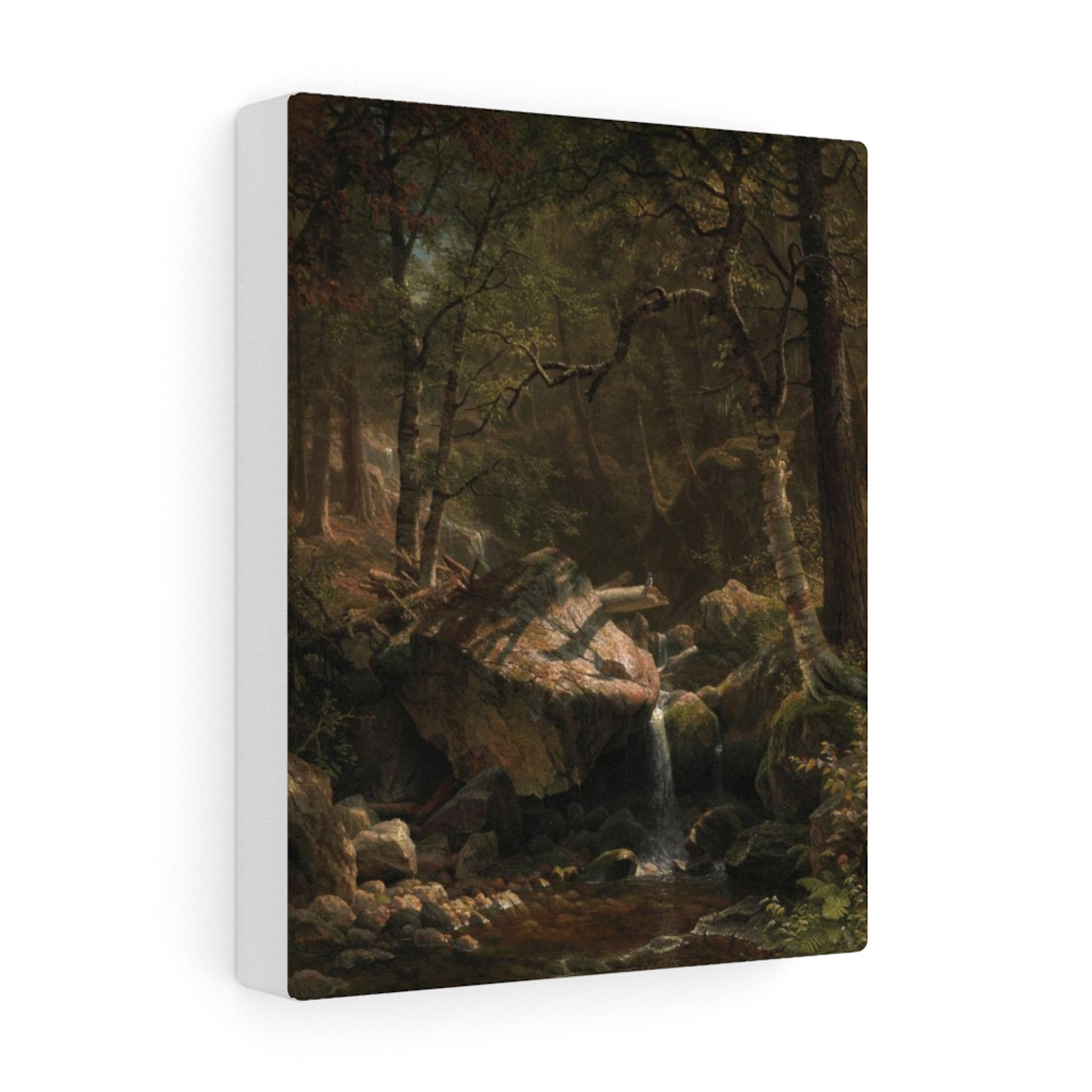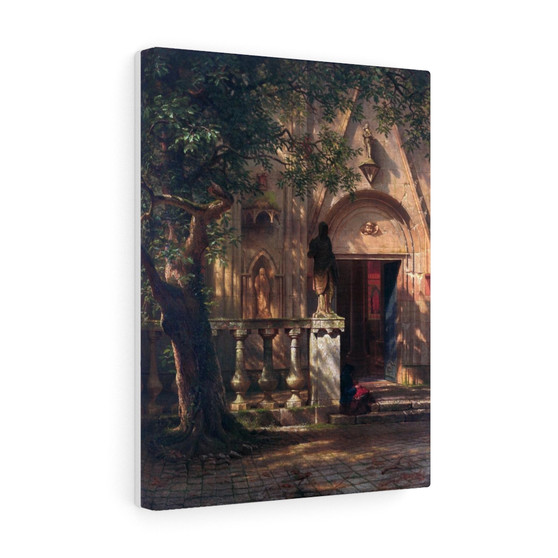Albert Bierstadt
kjs on 27th May 2022
His Early Years
Alfred Bierstadt (1830-1902) was born in Solingen, Germay, in 1830. His parents immigrated to America in 1932 and settled in New Bedford, Massachusetts.
Bierstadt was a well-known figure in the 19th century Hudson River School, along with Frederic Edwin Church, among others. He was also a member of the Rocky Mountain School of Painters, who specialised in the grandiose mountain scenery.
Alfred Bierstadt was famous for his large-size landscape painting of Western American wilderness scenery as subjects. His subjects included American National Parks, scenic reserves, lakes glaciers and wild animals.
His paintings were highly popular and sold for huge sums of money. Bierstadt returned to Germany to study at the Dusseldorf Academy during the period from 1853 to 1857 to study and develop his drawing and painting techniques.
Unhelpful Fellow American Artists
In Germany, he sought the help of two fellow American painters to convince Andreas Achenbach to accept him as a student. The ex-pats, whose help he had sought to gain entry into the Academy, considered the quality of his paintings as low.
When the incident made his entry into the Academy difficult, he remained in Europe for four more years and devoted his time for the study of his art by travelling to many places, including to France and Italy.
However, experts feel that it was only in America that he found his true inspiration and these were the frontier landscapes of the Wild West.
Period of Success
Upon his return to America in 1857, he taught drawing and painting for a brief period. After that, he decided to devote himself entirely to painting. In the beginning, he painted landscapes based on his experience in Europe and European landscapes.
Thereafter he travelled to the Platte River and Wind River Mountains, sketching the breathtaking scenery and the native inhabitants. His visit to the Rockies reminded him of the Alps in Europe and the light of Italy.
Survey Expedition
In 1859, Bierstadt joined an overland survey expedition with Frederick Lander, a land surveyor for the US government. The US government had employed Lander to survey, engineer, and built what would later become known as the Lander Trail across Wyoming and Idaho.
Bierstadt studied the landscape and made sketches during these expeditions. These sketches would later become the basis for his huge paintings. After the death of Frederick Lander in the Civil War, Bierstadt joined writer Fitz Hugh Ludlow on an expedition to Utah, San Fransisco and Yosemite Valley.
Ludlow later chronicled his trip with Bierstadt in his future articles. When he was drafted for the Civil War, he paid a substitute to take his place in the explorations.
‘The Rocky Mountains’
Then it dawned upon Bierstadt that “our own country has the best material for the artists in the world’. The Rocky Mountains (1860) was his first important painting from this period and this painting was reported as lost. Bierstadt’s 1863 version of this painting, ‘The Rocky Mountains’ is presently displayed at the Metropolitan Museum of Art, New York.
His reputation began to grow when his painting ‘Rocky Mountains‘ was displayed opposite a work by the highly respected landscape artist Frederic Edwin Church at the 1864 New York Sanitary Fair. Bierstadt’s success story lasted for another decade during which period his painting ‘Rocky Mountains‘ sold for $25000 as did his other painting ‘Domes of Yosemite‘.
Yosemite Valley Painting
‘Domes of Yosemite‘ a painting by Bierstadt is a depiction of America’s most popular natural wonders, that of the mountain peaks of the Yosemite valley. In 1864, Abraham Lincoln officially granted the Yosemite Vally to the State of California.
It was America’s first official public land trust in history. The financier Legrand Lockwood commissioned Bierstadt to create the work on Yosemite Vally. Bierstadt received an astronomical fee of $25000. This turned out to be a period of self-discovery in America and people started to realise that their landscape was as good as anything in Europe.
In this painting, Bierstadt enhanced the natural scene by narrowing the valley and dramatically accentuating the heights of the mountains. Another beautiful example from this period is Mountain Brook (1863)
Acclaim and Honour
Bierstadt married in 1866 and the newlyweds spent two years travelling around Europe. During this period, he received a lot of acclaim. The couple met Queen Victoria in London and Pris, received the award ‘Legion of Honour’.
During his travel, Bierstadt rented studios and produced works on western scenery. He returned to America in 1870 and headed west to Yosemite and the Sierra Nevada region. He stayed there for two years, sketching, painting and selling works to collectors in the San Francisco area.
Luminism, His Style
One of the Art Historians described the style of painting followed by Bierstadt as Luminism. Luminist landscape style is a “polished and meticulous realism in which there is no sign of brushwork and no trace of impressionism.
The Luminist painters achieve the atmospheric effects by definite gradations of tone by the exact study of relative clarity of near and far objects and by a precise rendering of the variations in texture and colour produced by direct or reflected rays”
Decline of Fortunes
During the 1870s, landscape paintings fell out of favour and hence Bierstadt’s happier days started to decline. His work for the 1876 Philadelphia Centennial was not well received. This painting ‘Last of the Buffalo’ (1889) was rejected for the 1889 Paris Universal Exposition.
Despite’s these unfavourable incidents, Bierstadt paintings continued to find customers and fetched high prices. When his wife fell ill during the 1870s, he spent time in the Bahamas for the improvement of his wife’s declining health.
When his wife died in 1893, he married a wealthy widow in the following year. Though he saw financial success to some extent, his extravagant lifestyle led him into a pile of debt. He had to sell his entire property and assets, including 150 paintings to satisfy his creditors.
He died suddenly in 1902.
State Honour
Bierstadt was a member of the National Academy of Design from 1860 until his death. He was a member of the Century Association, an exclusive club of authors and artists. He was highly prolific in creating his paintings and he created thousands of paintings during his lifetime.
In 1998, the US Postal Service issued a set of commemorative stamps entitled Four Centuries of Americal Art and one of these stamps contained the image of Bierstadt. In 2009, his painting ‘Oregon Trail’ sold for $1.7 million and his other painting ‘Mountainous Landscape by Moonlight‘ fetched $1.1 million.

















